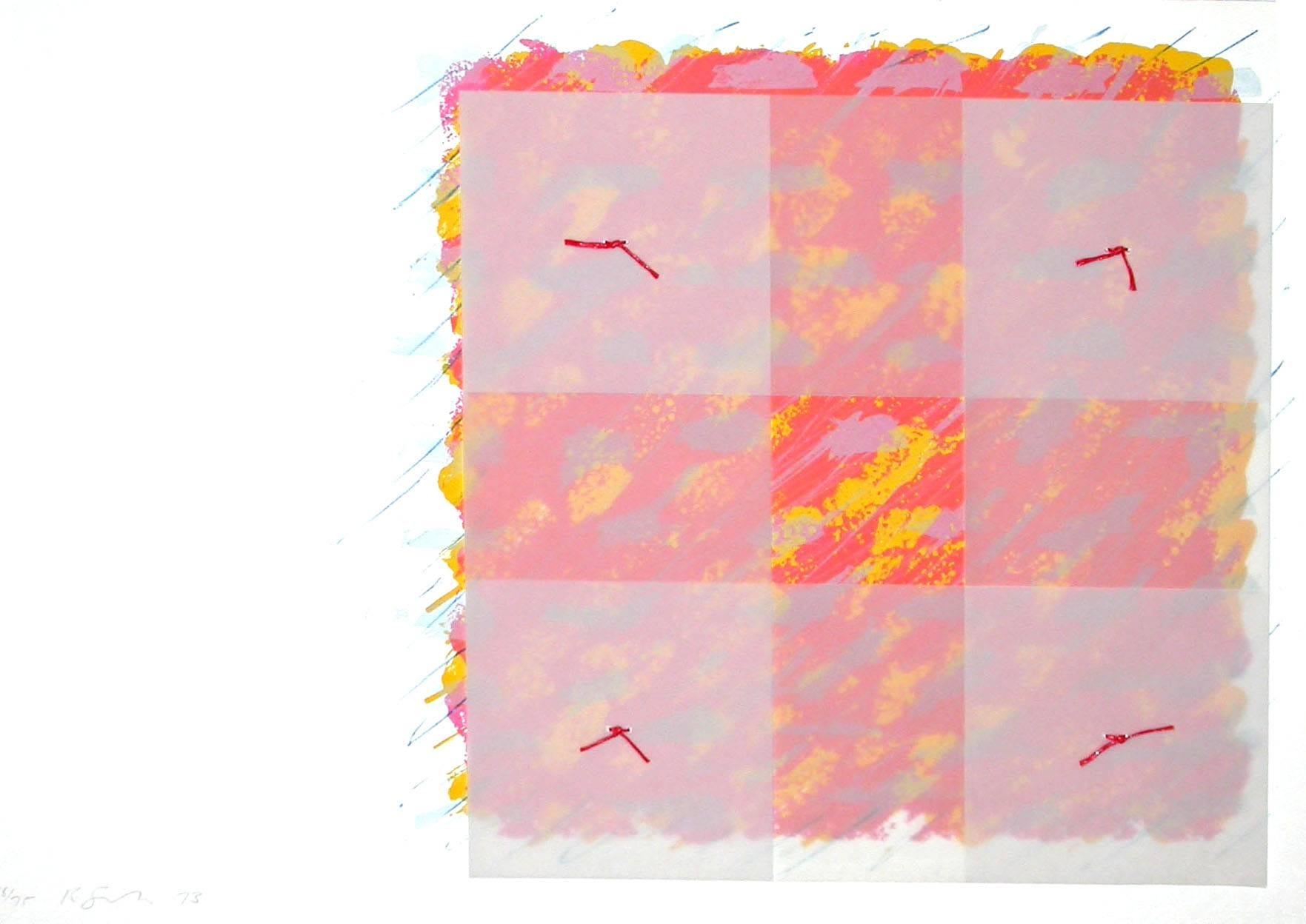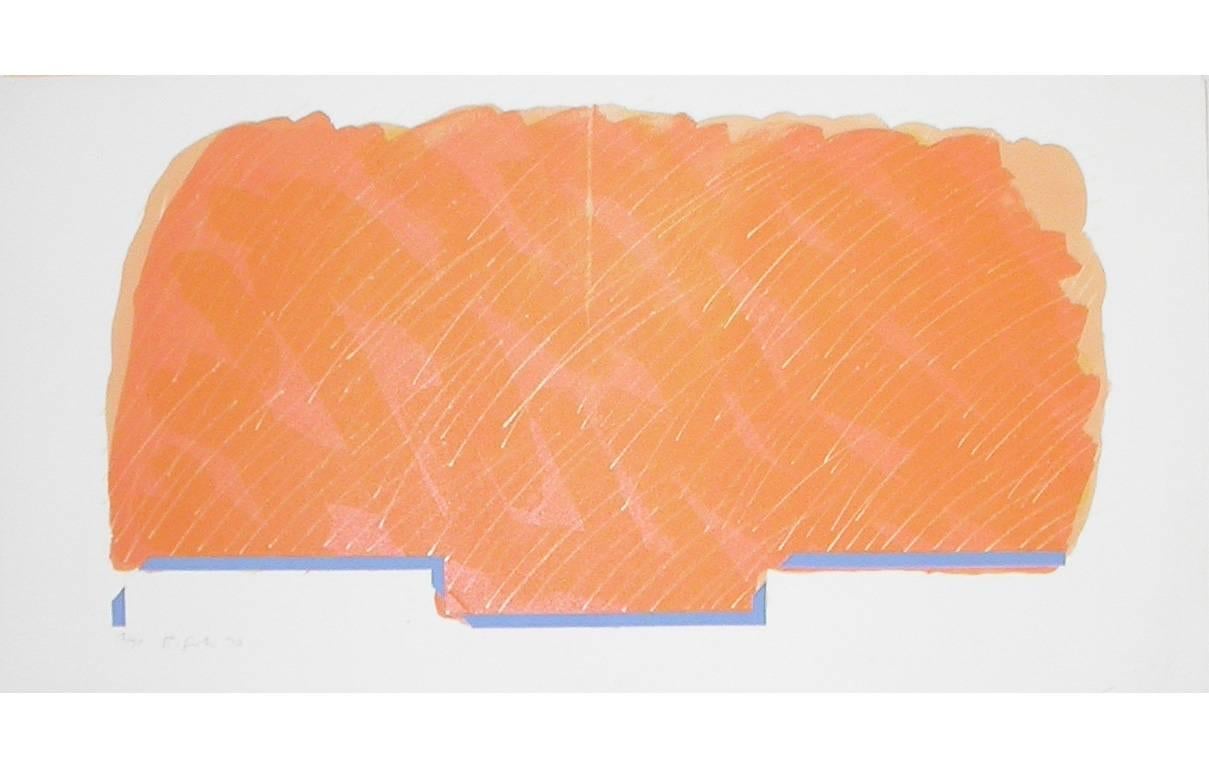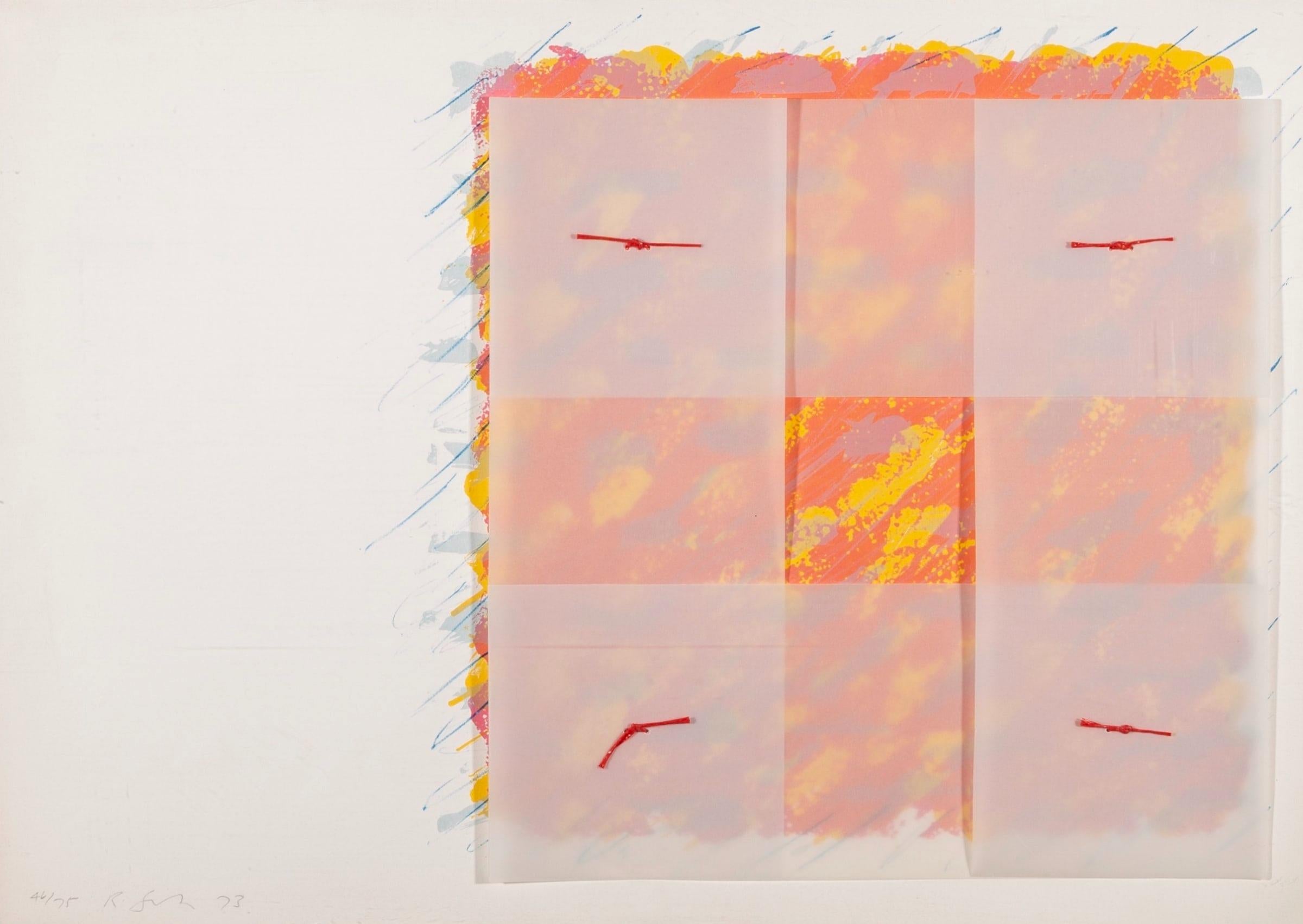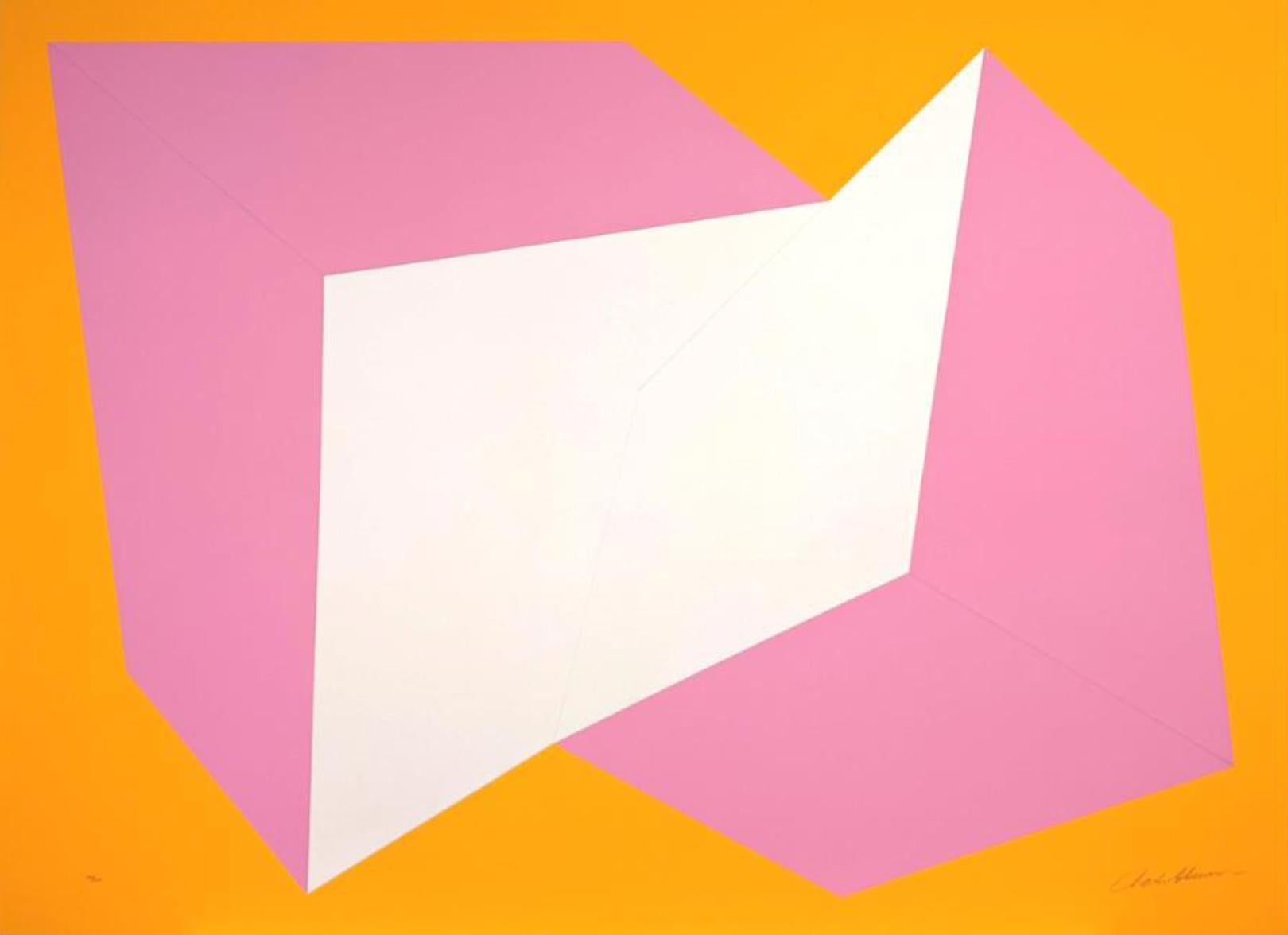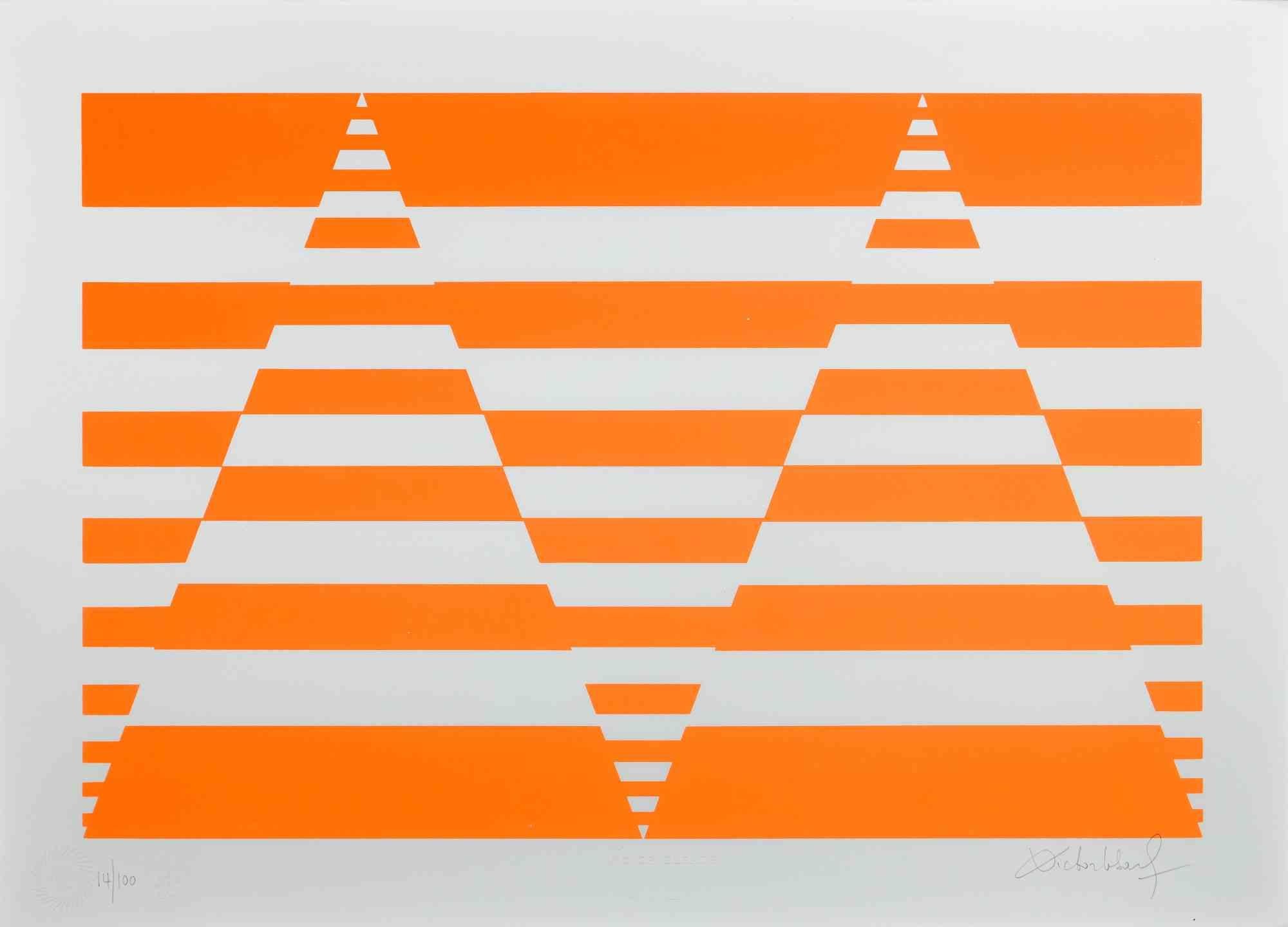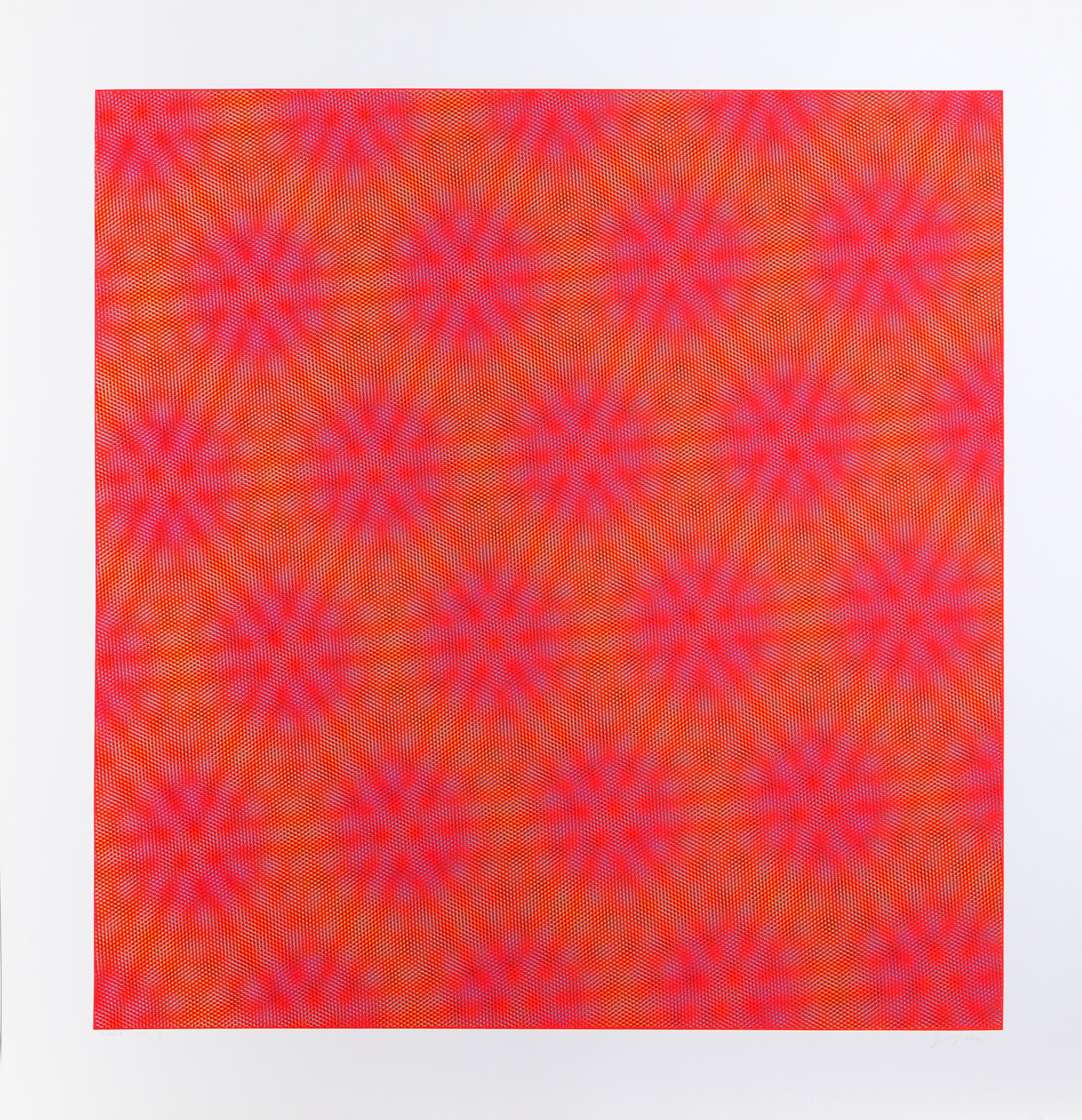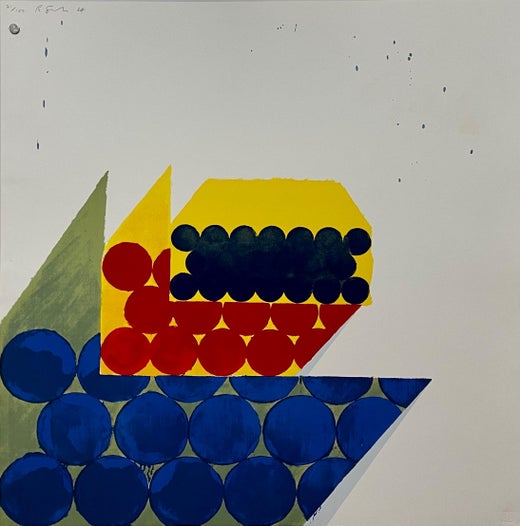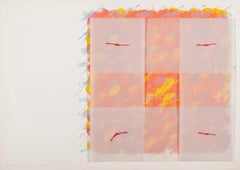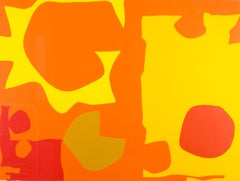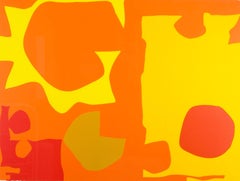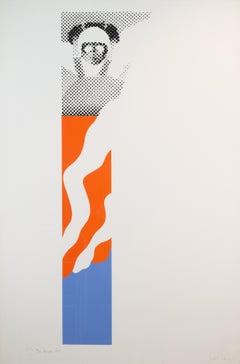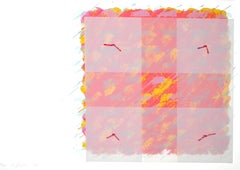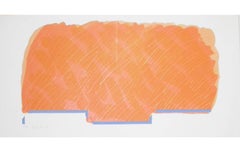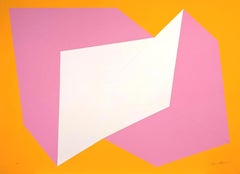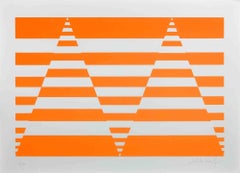Items Similar to Bright Orange Abstract 1970s Print with Pink, Bold Richard Smith Lithograph
Want more images or videos?
Request additional images or videos from the seller
1 of 6
Richard SmithBright Orange Abstract 1970s Print with Pink, Bold Richard Smith Lithograph1971
1971
$1,564.36
£1,150
€1,342.38
CA$2,182.85
A$2,363.40
CHF 1,256.51
MX$28,504.18
NOK 15,801.30
SEK 14,731.32
DKK 10,025.90
About the Item
Sun Curtain by Richard Smith, 1971
Additional information:
Medium: lithograph on two sheets
64 x 92 cm
25 1/4 x 36 1/4 in
signed and dated in the plate
Charles Richard "Dick" Smith was an English printmaker and painter.
Smith was born in Letchworth, Hertfordshire, to Doris (née Chandler), a nurse and daughter of a chemical company director. He studied at Hitchin Grammar School and Luton School of Art. After military service with the Royal Air Force in Hong Kong, he attended St Albans School of Art followed by post-graduate studies at the Royal College of Art, London, from 1954-57. Smith shared a flat-cum-studio with Peter Blake in his second year at the RCA, and then again for two years after he left the college in 1957. When Terence Conran's Soup Kitchen opened on Fleet Street in the late 1950s, it featured a letter-collage mural by Smith and Blake. Michael Chow would later commission Smith to design installations for his restaurant in Los Angeles, and Chow and Conran have remained two of his biggest supporters.
In 1959 he moved to New York to teach on a Harkness Fellowship, staying for two years, where he produced paintings combining the formal qualities of many of the American abstract painters which made references to American commercial culture. The artist's first solo exhibition was at the Green Gallery. As his work matured it tended to be more minimal, often painted using one colour with a second only as an accent.
In trying to find ways of transposing ideas, Smith began to question the two-dimensional properties of art itself and to find ways by which a painting could express the shape of reality as he saw it. He began to take the canvas off the stretcher, letting it hang loose, or tied with knots, to suggest sails or kites - objects which could change with new directions rather than being held rigid against a wall, and taking painting close to the realm of sculpture. These principles he carried into his graphic work by introducing cut, folded and stapled elements into his prints; some works were multi-leaved screenprinting, and others printed onto three-dimensional fabricated metal.
Smith returned to England in 1963 - specifically East Tytherton, Wiltshire where Howard Hodgkin was a neighbour - and gained critical acclaim for extending the boundaries of painting into three dimensions, creating sculptural shaped canvases with monumental presence, which literally protruded into the space of the gallery. Evocative titles such as Panatella and Revlon, and cosmetic, synthetic colours alluded to the consumer landscapes of urban America which had proved so influential. He showed at the Kasmin Gallery, a venture between Kas and the Marquess of Dufferin and Ava in New Bond Street, throughout the 60s, more-widely known as David Hockney's first gallery.
After being awarded the Grand Prize at the 9th São Paulo Biennial in 1967 and important exhibitions at Kasmin in 1963, Tate in 1964, and Richard Feigen Gallery in 1966, Smith was invited to exhibit at the XXXV Venice Biennale as the official British artist in 1970. Smith was chosen by a committee of art experts, who were Director of Tate Norman Reid, art historian Alan Bowness, art collector David Thompson, the British Council’s Lilian Somerville and art historian Norbert Lynton. Smith taught with Richard Hamilton at Gateshead in 1965, where he met Mark Lancaster and Stephen Buckley, and again in 2000, becoming close to the artist and his wife, Terry.
By the late 1960s Smith's ambition to produce paintings which shared a common sensibility with other media, such as film and photography, began to wane and he focused on the formal qualities of painting. The freestanding installation Gazebo exhibited at the Architectural League of New York in 1966, and a tent project at the Aspen Design Conference of the same year, led to the development of his renowned ‘Kite’ paintings. First exhibited in New York in 1971, the traditional wooden supports of the canvases were replaced by aluminium rods and strings, allowing them to be hung freely in response to the surrounding architecture. Smith continued in the subsequent decades to construct site-specific works in public and private spaces often hanging from the ceilings or architectural supports. He resettled in Patchogue, New York in around 1977.
Smith was awarded the CBE in 1971. His work is held in the public collections of the Arts Council of Great Britain; The British Museum, London; Metropolitan Museum of Art, New York; The Museum of Modern Art, New York; Tate Gallery, London; Victoria and Albert Museum, London; Walker Art Center, Minneapolis; the Whitney, New York; MIT, Boston; Philadelphia Museum of Art; Museum of Contemporary Art, Chicago; Hirshhorn Museum and Sculpture Garden, Washington, DC. Private collectors included David Bowie.
“Where the first great abstract painters, including Kandinsky, Delaunay and Mondrian, derived their forms and colour harmonies essentially from nature, half a century later Richard Smith was at the forefront of a development in painting that took its cues not from the natural world but from visual stimuli already processed through culture. Smith’s joyful embrace of glamour and prismatic colour after the grey decade and a half of postwar austerity, brought him within the orbit of Pop Art at its very inception and assured him an important place in its early history.” Marco Livingstone, 2014
- Creator:Richard Smith (1931 - 2016, English)
- Creation Year:1971
- Dimensions:Height: 25.25 in (64.14 cm)Width: 36.25 in (92.08 cm)
- Medium:
- Period:
- Condition:
- Gallery Location:Kingsclere, GB
- Reference Number:1stDibs: LU2718214580622
Richard Smith
Charles Richard "Dick" Smith was an English printmaker and painter. He Attended St Albans School of Art followed by post-graduate studies at the Royal College of Art, London, from 1954-57. Smith shared a flat-cum-studio with Peter Blake in his second year at the RCA, and then again for two years after he left the college in 1957. When Terence Conran's Soup Kitchen opened on Fleet Street in the late 1950s, it featured a letter-collage mural by Smith and Blake. Michael Chow would later commission Smith to design installations for his restaurant in Los Angeles, and Chow and Conran have remained two of his biggest supporters. In 1959 he moved to New York to teach on a Harkness Fellowship, staying for two years, where he produced paintings combining the formal qualities of many of the American abstract painters which made references to American commercial culture. The artist's first solo exhibition was at the Green Gallery. As his work matured it tended to be more minimal, often painted using one colour with a second only as an accent. In trying to find ways of transposing ideas, Smith began to question the two-dimensional properties of art itself and to find ways by which a painting could express the shape of reality as he saw it. These principles he carried into his graphic work by introducing cut, folded and stapled elements into his prints; some works were multi-leaved screenprinting, and others printed onto three-dimensional fabricated metal. Smith returned to England in 1963 - specifically East Tytherton, Wiltshire where Howard Hodgkin was a neighbour - and gained critical acclaim for extending the boundaries of painting into three dimensions, creating sculptural shaped canvases with monumental presence, which literally protruded into the space of the gallery. Evocative titles such as Panatella and Revlon, and cosmetic, synthetic colours alluded to the consumer landscapes of urban America which had proved so influential. He showed at the Kasmin Gallery, a venture between Kas and the Marquess of Dufferin and Ava in New Bond Street, throughout the 60s, more-widely known as David Hockney's first gallery. Smith was invited to exhibit at the XXXV Venice Biennale as the official British artist in 1970. Smith taught with Richard Hamilton at Gateshead in 1965, where he met Mark Lancaster and Stephen Buckley, and again in 2000, becoming close to the artist and his wife, Terry. By the late 1960s Smith's ambition to produce paintings which shared a common sensibility with other media, such as film and photography, began to wane and he focused on the formal qualities of painting. First exhibited in New York in 1971, the traditional wooden supports of the canvases were replaced by aluminium rods and strings, allowing them to be hung freely in response to the surrounding architecture. Smith continued in the subsequent decades to construct site-specific works in public and private spaces often hanging from the ceilings or architectural supports. He resettled in Patchogue, New York in around 1977. Smith was awarded the CBE in 1971.
About the Seller
No Reviews Yet
Vetted Professional Seller
Every seller passes strict standards for authenticity and reliability
Established in 2010
1stDibs seller since 2024
43 sales on 1stDibs
Typical response time: 9 hours
- ShippingRetrieving quote...Shipping from: Kingsclere, United Kingdom
- Return Policy
More From This Seller
View AllFlorentine 2, Abstract Yellow and Orange Print on White with Mixed Media, 1973
By Richard Smith
Located in Kingsclere, GB
Florentine 2 by Richard Smith, 1973
Additional information:
Medium: lithograph on heavy wove paper, with carbon tracing paper and plastic strings
19 3/4 x 27 1/2 in
50 x 70 cm
signed, dated and numbered 46/75 in pencil
Charles Richard "Dick" Smith was an English printmaker and painter.
Smith was born in Letchworth, Hertfordshire, to Doris (née Chandler), a nurse and daughter of a chemical company director. He studied at Hitchin Grammar School and Luton School of Art. After military service with the Royal Air Force in Hong Kong, he attended St Albans School of Art followed by post-graduate studies at the Royal College of Art, London, from 1954-57. Smith shared a flat-cum-studio with Peter Blake in his second year at the RCA, and then again for two years after he left the college in 1957. When Terence Conran's Soup Kitchen opened on Fleet Street in the late 1950s, it featured a letter-collage mural by Smith and Blake. Michael Chow would later commission Smith to design installations for his restaurant in Los Angeles, and Chow and Conran have remained two of his biggest supporters.
In 1959 he moved to New York to teach on a Harkness Fellowship, staying for two years, where he produced paintings combining the formal qualities of many of the American abstract painters which made references to American commercial culture. The artist's first solo exhibition was at the Green Gallery. As his work matured it tended to be more minimal, often painted using one colour with a second only as an accent.
In trying to find ways of transposing ideas, Smith began to question the two-dimensional properties of art itself and to find ways by which a painting could express the shape of reality as he saw it. He began to take the canvas off the stretcher, letting it hang loose, or tied with knots, to suggest sails or kites - objects which could change with new directions rather than being held rigid against a wall, and taking painting close to the realm of sculpture. These principles he carried into his graphic work by introducing cut, folded and stapled elements into his prints; some works were multi-leaved screenprinting, and others printed onto three-dimensional fabricated metal.
Smith returned to England in 1963 - specifically East Tytherton, Wiltshire where Howard Hodgkin was a neighbour - and gained critical acclaim for extending the boundaries of painting into three dimensions, creating sculptural shaped canvases with monumental presence, which literally protruded into the space of the gallery. Evocative titles such as Panatella and Revlon, and cosmetic, synthetic colours alluded to the consumer landscapes of urban America which had proved so influential. He showed at the Kasmin Gallery, a venture between Kas and the Marquess of Dufferin and Ava in New Bond Street, throughout the 60s, more-widely known as David Hockney's first gallery.
After being awarded the Grand Prize at the 9th São Paulo Biennial in 1967 and important exhibitions at Kasmin in 1963, Tate in 1964, and Richard Feigen Gallery in 1966, Smith was invited to exhibit at the XXXV Venice Biennale as the official British artist in 1970. Smith was chosen by a committee of art experts, who were Director of Tate Norman Reid, art historian Alan Bowness, art collector David Thompson, the British Council’s Lilian Somerville and art historian Norbert Lynton. Smith taught with Richard Hamilton at Gateshead in 1965, where he met Mark Lancaster and Stephen Buckley, and again in 2000, becoming close to the artist and his wife, Terry.
By the late 1960s Smith's ambition to produce paintings which shared a common sensibility with other media, such as film and photography, began to wane and he focused on the formal qualities of painting. The freestanding installation Gazebo exhibited at the Architectural League of New York in 1966, and a tent project at the Aspen Design...
Category
20th Century Abstract Prints
Materials
Lithograph
Six in Light Orange with Red in Yellow: April 1970 - Patrick Heron, Print 1970
By Patrick Heron
Located in Kingsclere, GB
Patrick Heron was a painter, textile designer and writer on art.
He was born in January 1920 in Leeds, the son of T.M. Heron, founder of Cresta Silks and a Christian sociologist. ...
Category
1970s Abstract Prints
Materials
Screen
Six in Light Orange with Red in Yellow : April by Patrick Heron, 1970
By Patrick Heron
Located in Kingsclere, GB
Six in Light Orange with Red in Yellow : April by Patrick Heron, 1970
Additional information:
Medium: screenprint
71 x 101 cm
28 x 39 3/4 in
signed, dat...
Category
20th Century Abstract Prints
Materials
Screen
Pennon, 1968 - 20th Century Graphic Abstract Screenprint, White, Blue + Orange
By Gerald Laing
Located in Kingsclere, GB
Laing was born in Newcastle upon Tyne. He grew up during World War II and experienced the Battle of Britain as young boy.
He attended the Royal Military Academy Sandhurst and served...
Category
1960s Abstract Prints
Materials
Screen
III, from Tri Motifs, 1977 - Bold Shapes, Orange, Green, Gouache and Watercolour
By Gordon House
Located in Kingsclere, GB
Gordon House was born in 1932 in Pontardawe, South Wales. Early exposure to art on trips to the Glynn Vivian Art Gallery as a young boy inspired House towards creative endeavors and ...
Category
20th Century Abstract Paintings
Materials
Ink, Watercolor, Gouache
Orange Dashes, Mixed Media by Theo Mendez
Located in Kingsclere, GB
Orange Dashes, Mixed Media by Theo Mendez
Additional information:
Medium: Mixed media
29 x 25 cm
11 3/8 x 9 7/8 in
Category
20th Century Mixed Media
Materials
Mixed Media
You May Also Like
Florentine I (red/orange)
By Richard Smith
Located in London, GB
Edition of 75
51 x 71 cms (20 x 28 ins)
Category
1970s Abstract Abstract Prints
Materials
Lithograph
Horizon I (orange with blue base)
By Richard Smith b.1955
Located in London, GB
33 x 71 cms (13 x 28 ins)
Edition of 75, Set of 6
Category
1970s Abstract Abstract Prints
Materials
Lithograph
Pink on Orange, Geometric Abstract Screenprint by Charles Hinman
By Charles Hinman
Located in Long Island City, NY
"This work was created with two separate entities that play against each other, in real and illusionary space, thus combining two separate realms that come together and play with one...
Category
1970s Abstract Geometric Abstract Prints
Materials
Screen
Orange Composition - Screen Print by Victor Debach - 1970s
By Victor Debach
Located in Roma, IT
Screen print on paper realized by Victor Debach in 1970s.
Hand signed and numbered in pencil.
Edition of 100.
Excellent condition.
Category
1970s Op Art Abstract Prints
Materials
Screen
K-BYMR, Orange OP Art Screenprint by Josef Levi
By Josef Levi
Located in Long Island City, NY
This screenprint was created by American artist Josef Levi. Levi is especially known for his interest in the visual similarities that transcend cultures, like the pattern shown here....
Category
1970s Op Art Abstract Prints
Materials
Screen
$680 Sale Price
20% Off
T Series (Orange), Geometric Abstract Screenprint by Arthur Boden
By Arthur Boden
Located in Long Island City, NY
Artist: Arthur Boden, American
Title: T Series (Orange)
Year: circa 1970
Medium: Screenprint, signed and numbered in pencil
Edition: 100
Size: 29 in. x 23...
Category
1970s Abstract Geometric Abstract Prints
Materials
Screen
More Ways To Browse
Vintage Conrans
Dick English
Alan Thompson
Jewish Pop Art
Joan Miro Barcelona Lithograph
Joan Miro Large
Joan Miro Limited Edition
Joan Mitchell Lithograph
Kenneth Noland Lithograph
Manoela Madera
Matisse Pochoir
Matsutani Takesada
Miro Sobreteixims
Mr Doodle
Noemi Gerstein
Peter Max Flower Abstract
Pia Stern
Print Signed Whitney
